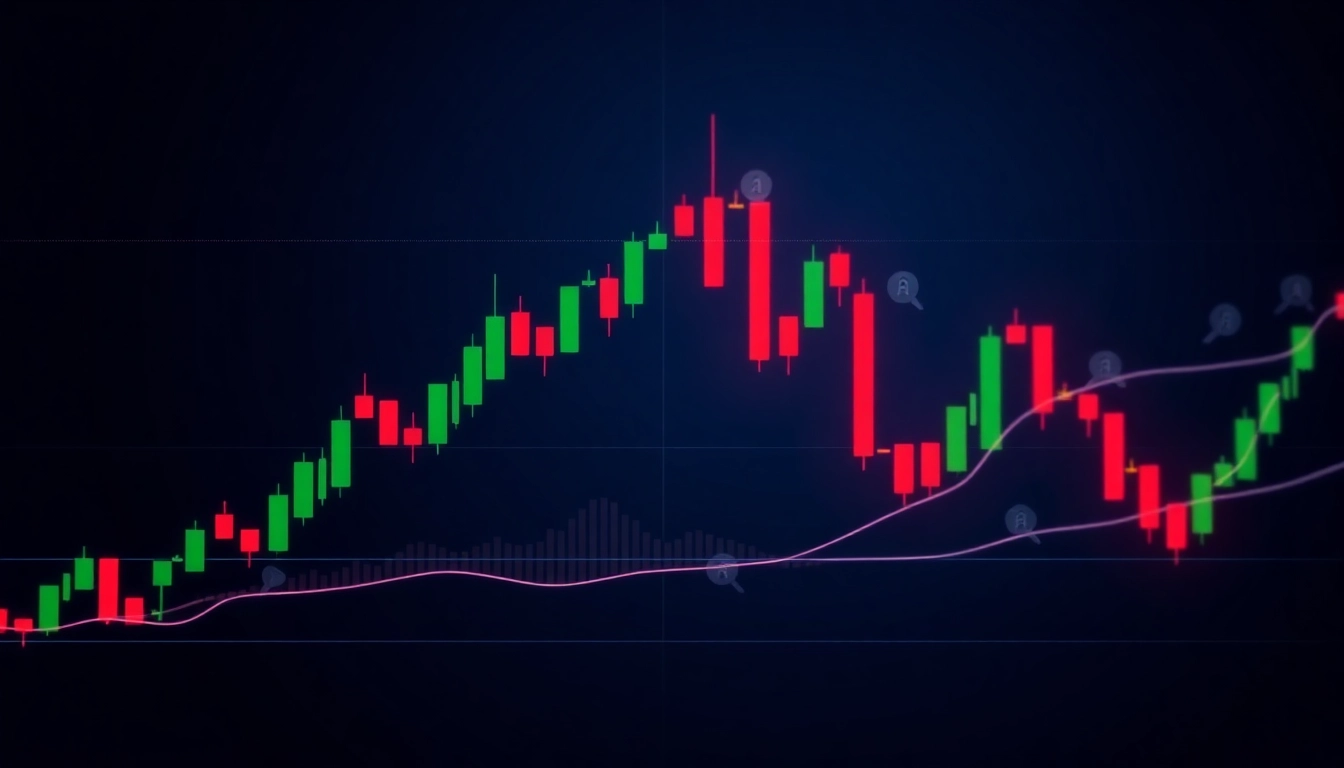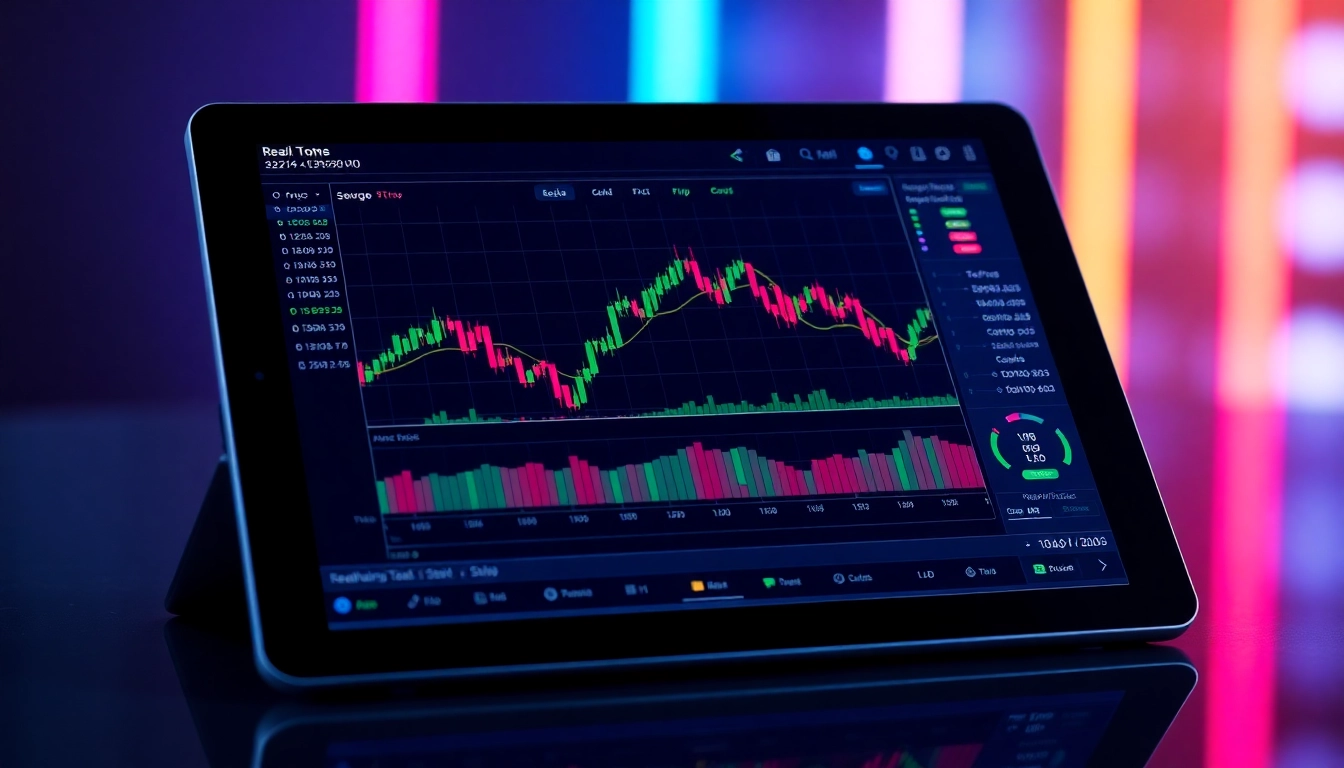Introduction to Trading View: Features and Benefits
In today’s fast-paced financial markets, traders and investors require powerful tools that facilitate real-time analysis, comprehensive data visualization, and community engagement. trading view has emerged as a leading platform that consolidates these functionalities into an intuitive and feature-rich environment. From beginners exploring chart basics to seasoned professionals employing advanced technical analysis, TradingView provides a versatile platform capable of meeting diverse needs. Its core tools, seamless user experience, and social features not only enhance market understanding but also foster a collaborative trading community that accelerates learning and strategy development.
Overview of Trading View’s Core Tools
TradingView’s foundation rests on its robust suite of core tools designed to streamlines market analysis. The platform offers unparalleled charting capabilities, supporting a wide array of asset classes including stocks, cryptocurrencies, forex, commodities, and indices. Its charts are highly customizable, allowing traders to select from different chart types—candlestick, bar, line—and adjust timeframes from seconds to monthly spans.
Complementing these visual tools are a vast library of technical indicators—over 100—and drawing tools that empower traders to annotate charts precisely. Users can overlay moving averages, RSI, MACD, Bollinger Bands, Fibonacci retracements, and other indicators, enabling multifaceted analysis within a single workspace. Furthermore, the platform’s built-in scripting language, Pine Script, allows for creating and deploying custom indicators and strategies, exponentially expanding analytical possibilities.
How Trading View Enhances Market Analysis
TradingView significantly elevates market analysis by integrating real-time data feeds, collaborative features, and advanced tools that foster deeper insights. Its live streaming data ensures traders operate with the most current information, critical for timely decision-making. The platform’s social component—community ideas, chat rooms, and shared scripts—enables traders to gain diverse perspectives, validate strategies, and refine their analysis.
Moreover, TradingView’s multi-timeframe analysis capability allows users to examine price action across different intervals simultaneously, identifying trends and reversals with greater confidence. This holistic approach to chart analysis supports systematic trading and reduces impulsive decisions rooted in incomplete data.
Its multiscreen compatibility and cloud-based storage mean traders can access their work from any device, ensuring continuous market monitoring and quick reactions to price movements.
Key Benefits for Traders and Investors
- Accessibility and User-Friendliness: The platform’s intuitive interface lowers the barrier to entry for new traders, while advanced users benefit from its extensive customization options.
- Cost-Effective Solutions: TradingView offers a free tier with essential features, along with premium subscriptions that unlock additional capabilities such as multiple alerts, higher data refresh rates, and more indicators.
- Community and Social Trading: Access to a vibrant community where traders share ideas, scripts, and trading strategies fosters collaborative growth and idea validation.
- Integration with Brokerages: Native connections to brokerage accounts facilitate easy execution of trades directly from charts, streamlining workflows.
- Educational Resources: The platform doubles as an educational hub with tutorials, webinars, and user-generated content, accelerating learning curves for beginners and seasoned traders alike.
Setting Up Your Trading View Account for Success
Creating a Custom Watchlist and Alerts
A tailored watchlist allows traders to monitor assets most relevant to their strategies. Users can add symbols manually or import from external sources, categorizing assets by markets or trading styles. Alerts are vital for prompt reactions to price movements; TradingView offers customizable notifications based on price levels, indicator signals, or drawing tools. Setting up alerts correctly ensures that traders are informed of opportunities without drowning in unnecessary notifications.
Navigating the Interface for Ease of Use
TradingView’s interface emphasizes clarity and ease. The main workspace features the chart area, quick access toolbar, and panels for indicators, watchlists, and social features. Users should customize their layout—saving different workspace setups for various trading scenarios—and utilize keyboard shortcuts for efficient navigation. The platform’s dark and light themes accommodate user preferences, reducing eye strain during extended analysis sessions.
Connecting Trading View with Brokers and Apps
Seamless broker integration is a hallmark of TradingView. Users can connect supported brokerages to place trades directly from charts, which reduces latency and enhances execution speed. Additionally, the platform supports linking with mobile apps and third-party trading applications, enabling a unified trading ecosystem that operates across devices.
Advanced Charting Techniques Using Trading View
Utilizing Technical Indicators Effectively
Technical indicators are the backbone of analytical decision-making. Effective usage involves understanding each indicator’s purpose and how it complements others. For example, combining trend-following indicators like moving averages with oscillators like RSI can confirm trend strength and exhaustion points. Traders should also learn to adjust indicator parameters to suit different asset classes and timeframes for optimal results.
Drawing Tools and Annotations for Precise Analysis
TradingView offers diverse drawing tools—trend lines, Fibonacci retracements, channels, and more—that allow detailed chart annotations. Using these tools helps in identifying support/resistance levels, pattern formations, and potential breakout zones. Clear annotations support structured trading plans and facilitate quick decision-making under pressure.
Implementing Multi-Timeframe Analysis
The multi-timeframe approach offers a layered view of market conditions. Traders can, for example, analyze long-term trends on weekly charts while timing entries on intraday charts. TradingView’s multi-pane view allows simultaneous monitoring of multiple timeframes, increasing the accuracy of entries and exits by confirming signals across different periods.
Strategies to Maximize Trading View Performance
Using Scripts and Custom Indicators
Pine Script enables traders to craft custom indicators and automated strategies, tailoring analysis to unique trading styles. By leveraging publicly available scripts or developing proprietary ones, users can automate complex calculations, generate alerts, and backtest strategies directly within the platform. This automation accelerates decision-making and promotes disciplined trading.
Integrating Social Features for Idea Sharing
One of TradingView’s standout features is its social community, where traders publish ideas, trade setups, and analysis. Engaging with this community exposes traders to diverse viewpoints, helps validate individual ideas, and fosters learning through feedback. Participating actively—sharing insights and asking questions—can significantly improve trading skills over time.
Tracking Portfolio and Performance Metrics
TradingView provides tools for portfolio management, allowing users to track trades, performance, and risk metrics. Keeping detailed records aids in evaluating strategies objectively, identifying strengths and weaknesses, and adjusting accordingly. Visualization of performance data encourages continuous improvement and disciplined risk management.
Best Practices and Common Challenges in Trading View
Avoiding Alert Overload and Noise
While alerts are invaluable, excessive notifications can lead to alert fatigue. To mitigate this, users should prioritize alerts based on their significance, set specific trigger conditions, and regularly prune inactive or redundant alerts. This approach maintains focus and ensures timely responses to critical market moves.
Maintaining Data Security and Privacy
With browser-based and cloud features, data security is paramount. Users should enable two-factor authentication, use strong passwords, and restrict sharing of sensitive account information. TradingView also adheres to robust data encryption standards, but traders should remain vigilant about phishing attempts and third-party integrations.
Adapting to Market Volatility with Dynamic Tools
Markets often exhibit sudden volatility; static analysis tools may become insufficient. TradingView’s dynamic features—such as real-time alerts, adaptive indicators, and risk management overlays—help traders respond swiftly. Regularly updating scripts and strategies to reflect current market conditions ensures resilience and adaptability.



